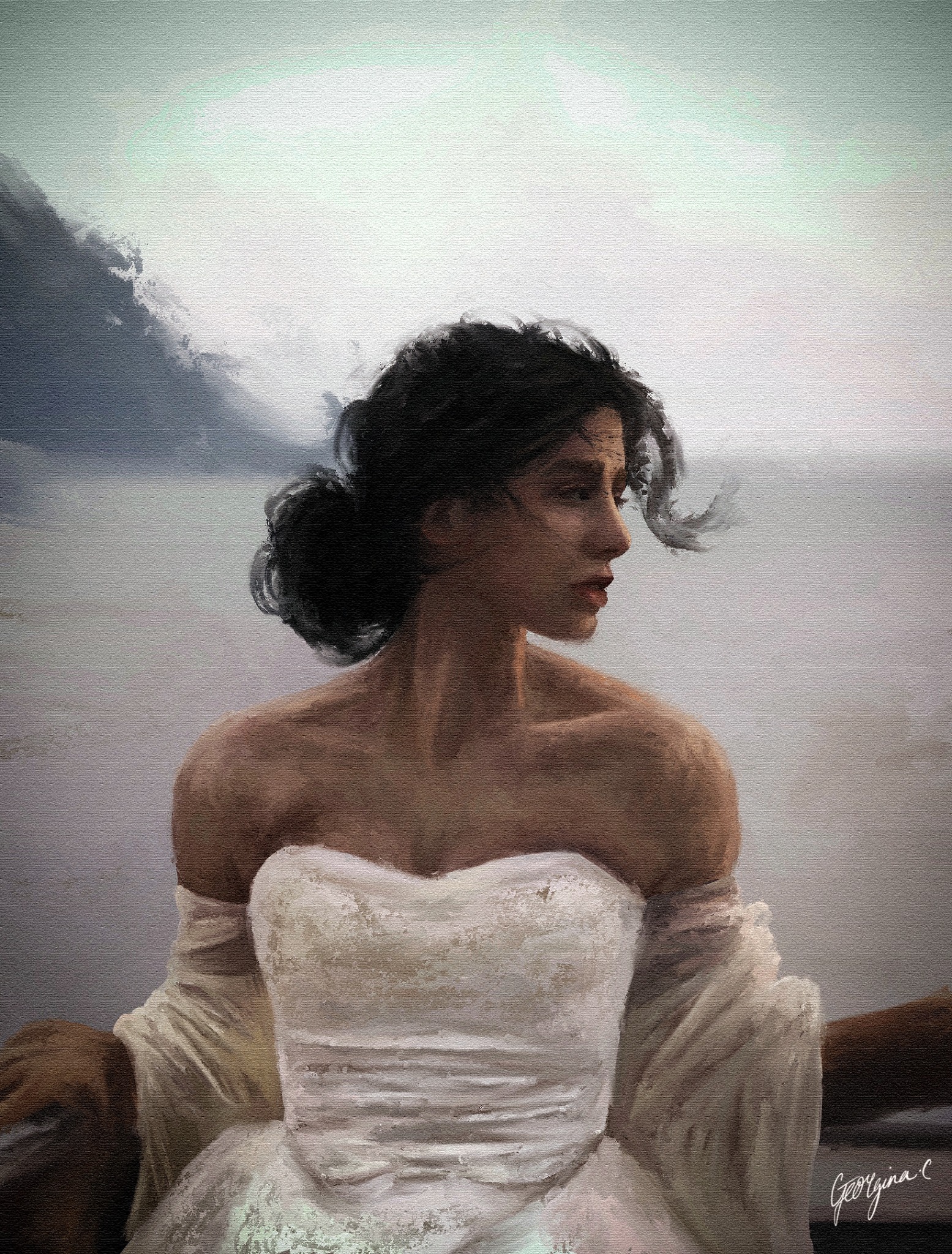
Aphrodite's Wish (2023)
Aphrodite’s Wish (2023) reinterprets divine beauty through a lens of human fragility. Blending Baroque light with Romantic emotional realism, Georgina M. Cox presents a figure poised between myth and memory, questioning what it means to be both adored and alone.
⤷ When I painted Aphrodite’s Wish, I wanted to explore the weight of beauty — not as an ideal, but as an expectation. The piece reimagines the goddess not as a symbol of perfection, but as someone caught in the human experience of longing. She stands at the edge of an unseen shore, wind-touched and distant, her gaze fixed somewhere beyond the horizon.
The title plays with the idea of reversal. Instead of mortals wishing for Aphrodite’s beauty, it imagines what Aphrodite herself might wish for — peace, privacy, or perhaps freedom from being seen. I was interested in the tension between being admired and being understood, and how those two rarely coexist.
Visually, the work draws from Romantic seascapes and Baroque portraiture. The palette is restrained and luminous, with pale tones and diffused light that echo the translucence of classical marble. Her gown, softly weathered and imperfect, contrasts the divine with the earthly. The folds and textures are intentionally rough, grounding the subject in realism, while the surrounding air feels almost sacred.
Her expression was central to the painting’s tone. She isn’t serene in the traditional sense; she’s contemplative, almost sorrowful. The wind moves through her hair, suggesting both vitality and unrest. I wanted the viewer to sense that she belongs to both worlds: the divine and the deeply human.
Thematically, Aphrodite’s Wish continues my exploration of femininity, mythology, and identity through emotional truth rather than idealisation. It asks what beauty costs, and whether admiration can ever coexist with freedom. The result is a portrait of divinity stripped of grandeur, where vulnerability becomes its own form of power.
Ultimately, the painting is about stillness within motion, that suspended moment when a figure of myth steps out of her story and simply breathes.
0 Comments Add a Comment?